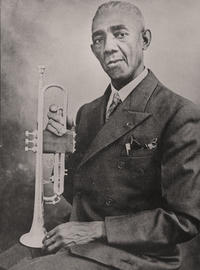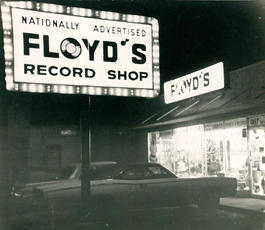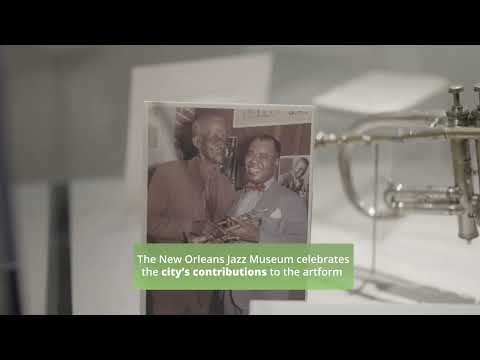30.0004902,-91.8294067
New Iberia, LA 70560
United States
Trail
Gravesite
Historic Site
Open to the Public
Most likely born in 1887, jazz trumpeter Willie “Bunk” Johnson came of age during the first decade of the twentieth century, when the music that came to be called jazz was just beginning to emerge in New Orleans. He is, however, primarily remembered today as the figurehead of the traditional New Orleans jazz revival, an artistic and commercial movement originating the early 1930s and continuing to the present day.
This movement, focused on “reviving” previously popular styles of jazz, was initiated by a small group of young jazz enthusiasts and record collectors. In its own time, the traditional New Orleans jazz revival aroused an enormous amount of controversy, and historians continue to view it from a wide variety of perspectives. As the appointed leader of this controversial movement, Johnson has also come to be regarded as an historical figure of great controversy. There are, however, several aspects of Bunk Johnson’s life and the traditional New Orleans jazz revival movement that remain beyond doubt. One is the central role the traditional New Orleans jazz revival movement played in helping establish the discipline of jazz history. Another is the culturally defined conflict between the New Orleans jazz revival and the simultaneous emergence of a progressive jazz movement in the years prior to, during, and after World War II. The last is the enduring influence the traditional New Orleans jazz revival has had on musicians, historians, avid fans, and general audiences both in the United States and in many other countries around the world.
Biography
Johnson was born in Uptown New Orleans as one of fourteen children. His musical education began when he entered school at the age of six. When he turned fifteen, he left school to become a professional musician. One of his first jobs was playing second cornet to trumpeter Charles “Buddy” Bolden, a pioneer in the early development of jazz. Johnson also worked with other groups in New Orleans, toured with a variety of traveling bands, visiting South America, Australia, and Japan. Johnson said he once played in England for Queen Victoria. Beginning in the early 1920s, he made southwestern Louisiana his base of operations, eventually settling in New Iberia with his common-law wife, Maude Fontenette, the daughter of a local bandleader.
When Johnson’s trumpet was destroyed after violence broke out during a 1932 dancehall performance, he began to rely more and more heavily on jobs such as yard work, truck driving, and music instruction. In 1939, several jazz enthusiasts compiling what many now believe to be the first meaningful work of jazz history, Jazzmen: The Story of Hot Jazz Told in the Lives of the Men Who Created It, contacted Johnson and established a relationship with him that led to the trumpeter’s resurrection as a working musician. During the next decade, he performed in many cities around the US, participated in more than fifty recording sessions, and attained celebrity status, both within the music world and in the cultural world at-large.
Controversy and Confusion
Some of the controversy associated with Johnson was due to the way he presented himself. According to jazz and ragtime historian Rudi Blesh: “He was just the right mixture of confidence and charm… And he was very conscious of being Bunk Johnson, an important person.” An engaging and sometimes dominating conversationalist, Johnson often narrated incidents from his early days in abundant detail, and sometimes made claims for himself that observers considered grandiose. Eventually, jazz historians began to doubt one of his primary claims – that he played with jazz pioneer Buddy Bolden – suggesting instead that Johnson was actually ten years younger than he said he was.
This led some to wonder if the nickname “Bunk” might actually refer to the slang term for absurd nonsense. But a student of Johnson’s, trumpeter “Wooden” Joe Nicholas, explained the nickname differently: “In my teens, I took about ten lessons from Bunk. Never could find him at home… That's why they called him ‘Bunk,’ he'd ‘bunk’ down anywhere…” Meanwhile, a number of respected jazz historians, in the absence of definitive proof otherwise, have chosen to accept Johnson's version of his life. These historians cite incidents proving Johnson's memory could be surprisingly accurate and rely on reports that he definitely appeared to be as old as he claimed. “[E]veryone to whom the authors have spoken who saw or knew Bunk during the 1940s,” write Mike Hazeldine and Barry Martyn, authors of the biography Song of the Wanderer, “have never had the slightest doubt that he was a man in his sixties.”
Bunk Johnson's Legacy
Much as historians remain divided about the actual date of Johnson's birth, opinion still varies widely in the assessment of the recorded music he left behind. At their extremes, critics consider Johnson's recorded music to be either a sublime recollection of early-twentieth-century jazz or an inept attempt by musicians of questionable talent to recreate an enduring kind of urban folk music.
Other aspects of Johnson’s legacy, however, are more certain. Following his death on July 7, 1949, the band of New Orleans musicians Johnson originally assembled, then led by clarinetist George Lewis, continued to play a style of music that many came to believe accurately reflects the essential musical and cultural traditions that led to the birth of jazz. As the New Orleans jazz revival became increasingly popular, both in the United States and around the world, it was also transformed into a more commercially-viable style, most often referred to as Dixieland jazz.
In England, the New Orleans jazz revival helped spawn a jazz/folk hybrid called skiffle, which became the basis for the 1960s English celebration of American popular music led by The Beatles, The Rolling Stones, and many others. While civic leaders in New Orleans at resisted the New Orleans jazz revival at first, by the 1970s it had become a major element in New Orleans's tourism and in the city’s self-image, reflected most clearly in the increasing popularity of the annual New Orleans Jazz & Heritage Festival, beginning in 1970 and continuing to the present day.
Content provided by 64 Parishes, a project of the Louisiana Endowment for the Humanities.










